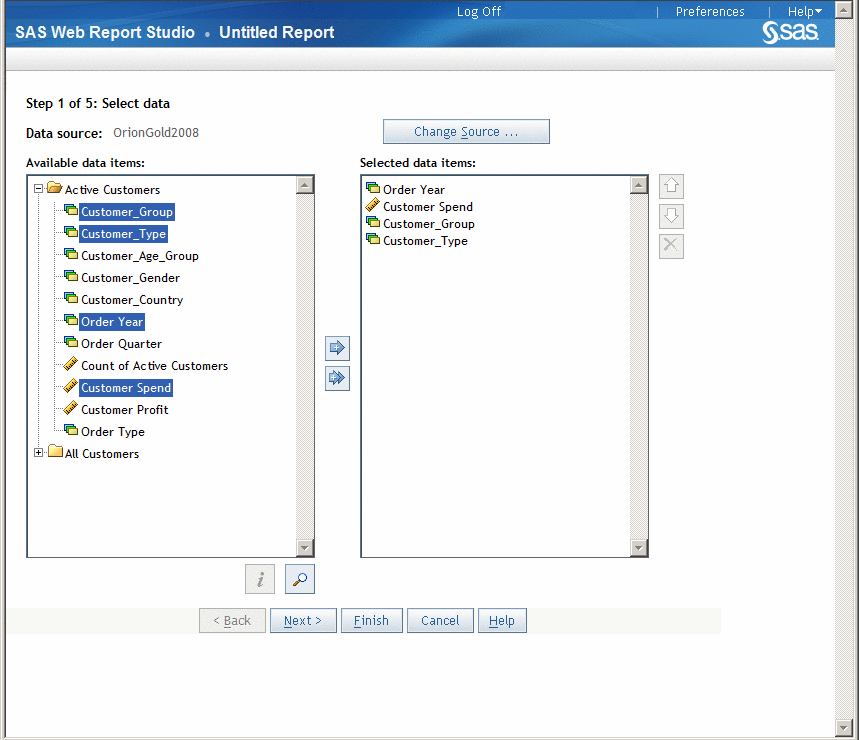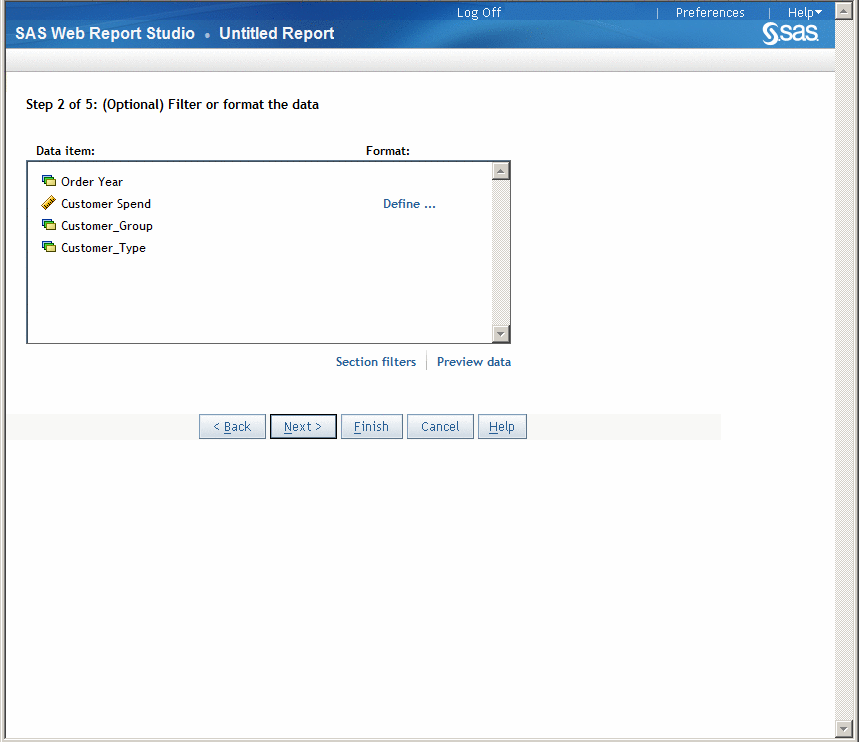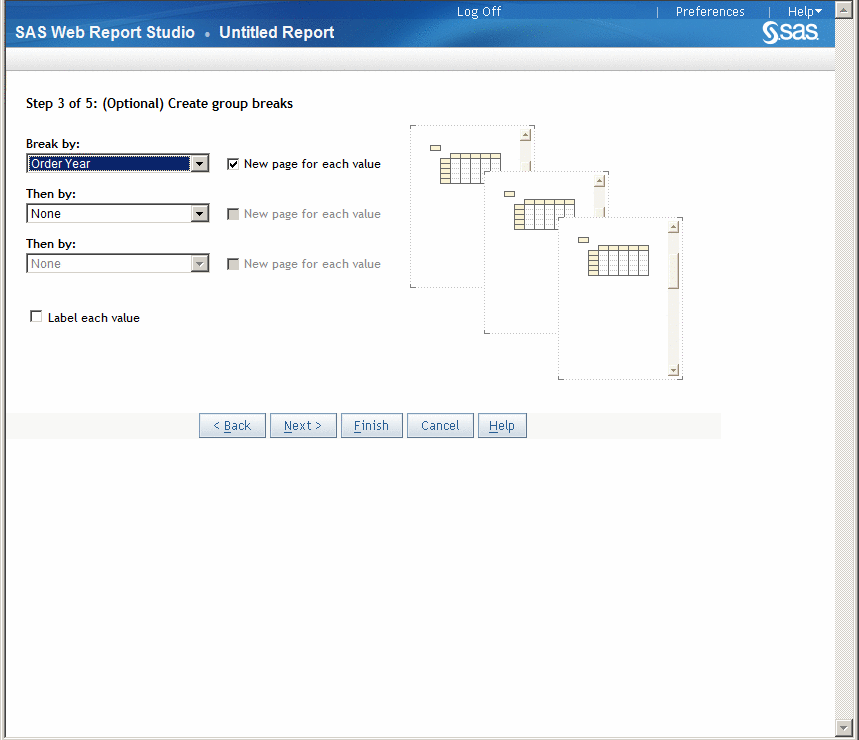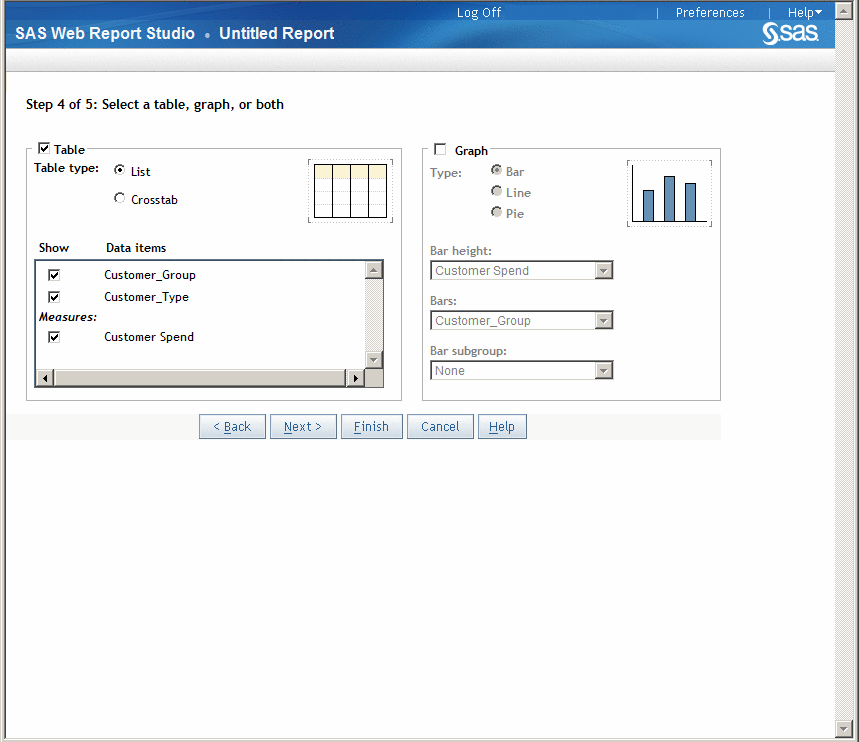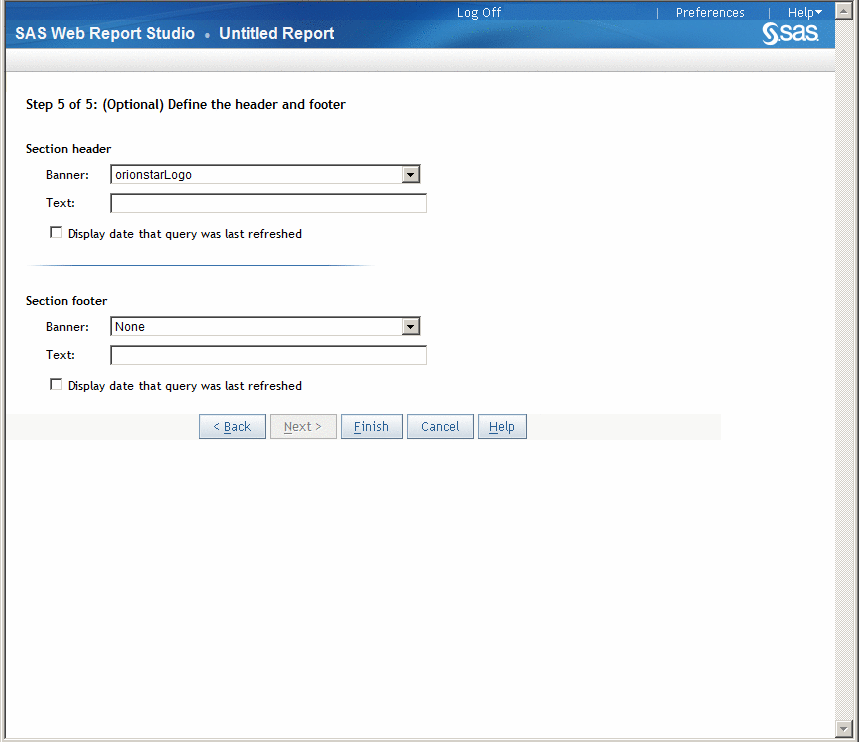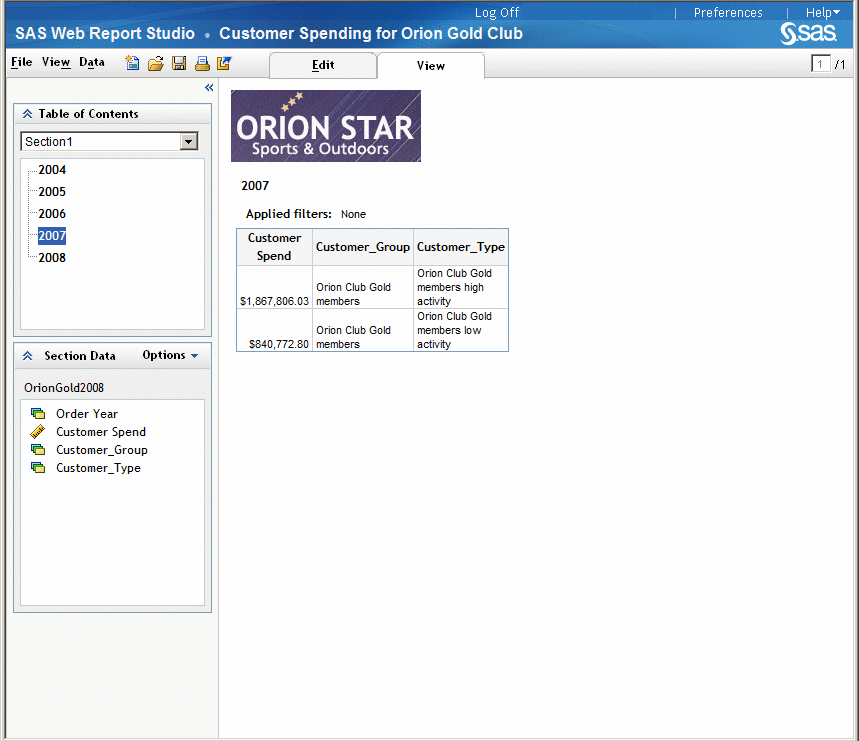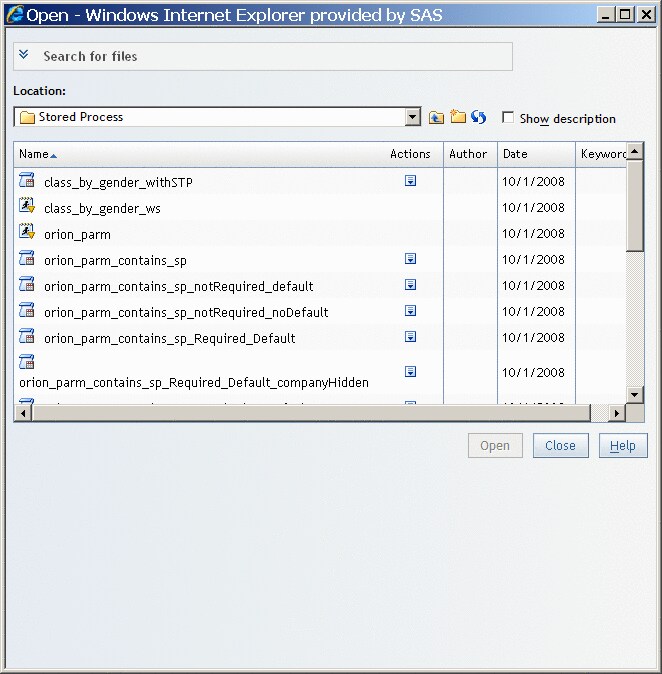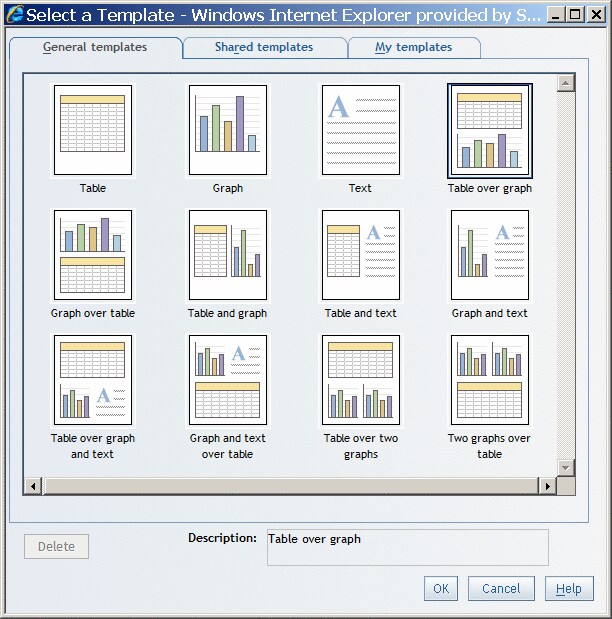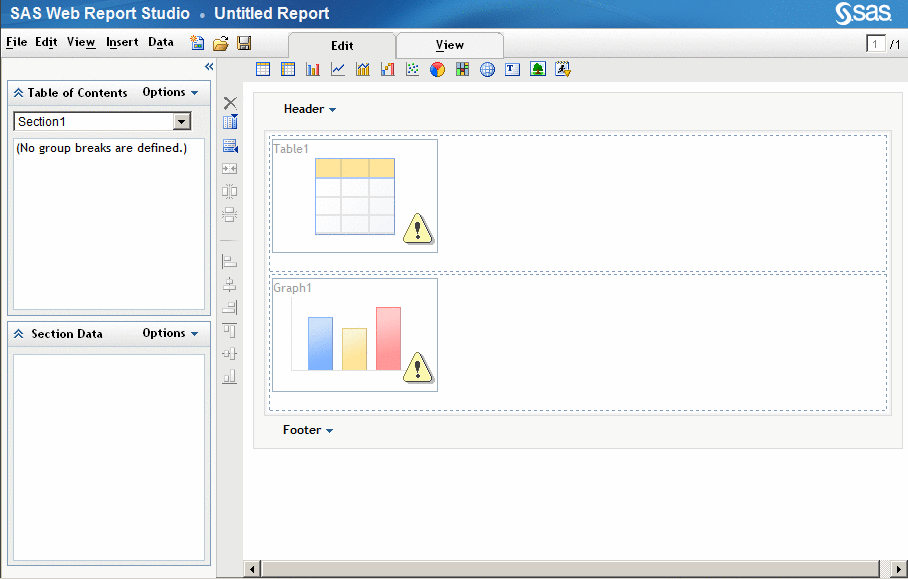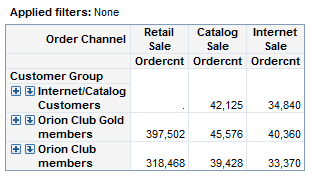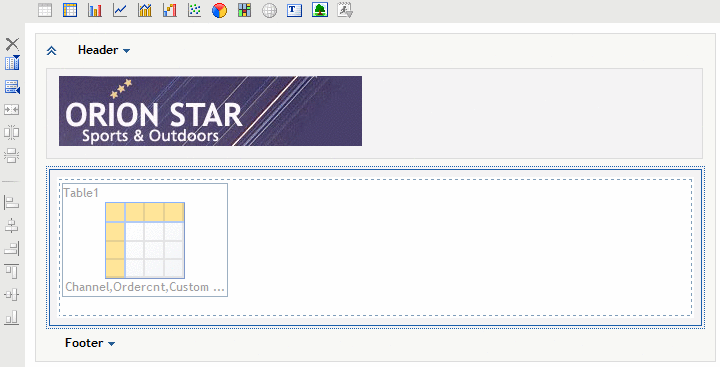Using a Quick Start Method to Create a Report
About the Quick Start Methods
There
are five quick start methods for creating a new saved report. Advantages and Considerations for Each Quick Start Method provides an overview of the advantages and considerations
for each quick start method.
Tip
When reviewing
the considerations, keep in mind that you can use Edit mode to make
modifications until the report is exactly the way that you want it.
Advantages and Considerations for Each Quick Start Method
Use the Report Wizard
The Report
Wizard guides you through five steps to create a one-section report
that uses standard data items.
-
TipAt this point, instead of clicking Next, you can click Finish to display the Edit tab. Defaults are used for any remaining unspecified required content. For example, if you are using a relational data source, a list table is automatically included. For more information about how to save the report at this point, see Save a Report.
-
(Optional) Select or create a category filter. For more information, see Subsetting Query Results.
-
(Optional) Change the format of some data items. For more information, see Modify the Format of a Standard Data Item.
-
Add at least one view element to display the results of the query, either a table or a graph (a bar chart, a line graph, or a pie chart). The data items that you selected in step 1 are shown as selected to display. Either accept the default data item assignments or deselect the Show check box to hide the data items that you do not want to display.
Base a New Report on a Stored Process Report
-
Run a stored process by selecting one of the last six viewed stored processes from the File menu or the Welcome window, using the Open dialog box (shown) or using the File Management window.Note: For more information about the File menu and the File Management window, see The SAS Web Report Studio Interface.
Note: By completing
the Save As dialog box, you create a new
saved report, either with the same name as the stored process or with
a new name. The original stored process continues to exist in addition
to the new saved report.
For more information
about saved reports that use stored processes, see Including Stored Process Output.
Base a New Report on a Report Template and Then Add Data
Report
templates can contain more than just report objects placed in certain
positions. Properties and, in some cases, linking can also be part
of a template. In addition, templates can contain multiple report
sections, each with a unique layout design. To create a saved report
by using a template, complete these steps:
-
Click OK. Your selected layout is displayed in the Edit tab. How Edit Mode Appears When You Select the Table Over Graph Template is an example of what Edit mode looks like if you select the Table over graph template.
-
Define the query by selecting data items from a data source. For more information, see Defining Queries to Obtain Results.
-
Select File
 Save. For more
information about how to complete the Save As dialog box, see Save a Report.
Save. For more
information about how to complete the Save As dialog box, see Save a Report.
Base a New Report on Ad Hoc Queries From an Information Map
A new
report based on ad hoc output from an information map uses one crosstabulation
table to present the results of a query that is based on three standard
data items from a selected information map. To create a report from
an ad hoc query of an information map, complete these steps:
-
Select File
 Save. For more
information about how to complete the Save As dialog box, see Save a Report.
Save. For more
information about how to complete the Save As dialog box, see Save a Report.
To create
a saved report from ad hoc output from an information map using Edit
mode so that you can make changes, complete these steps:
Base a New Report on an Existing Report
If there
is an existing saved report that closely matches the report that you
want to create, you can save the existing report under a new name,
which is the only step that is required to create a new saved report.
However, you will probably want to use Edit mode to make some customizations.
-
Select File
 Save As and complete the Save As dialog box, giving the report a new name. For more information,
see Save a Report.
Save As and complete the Save As dialog box, giving the report a new name. For more information,
see Save a Report.
